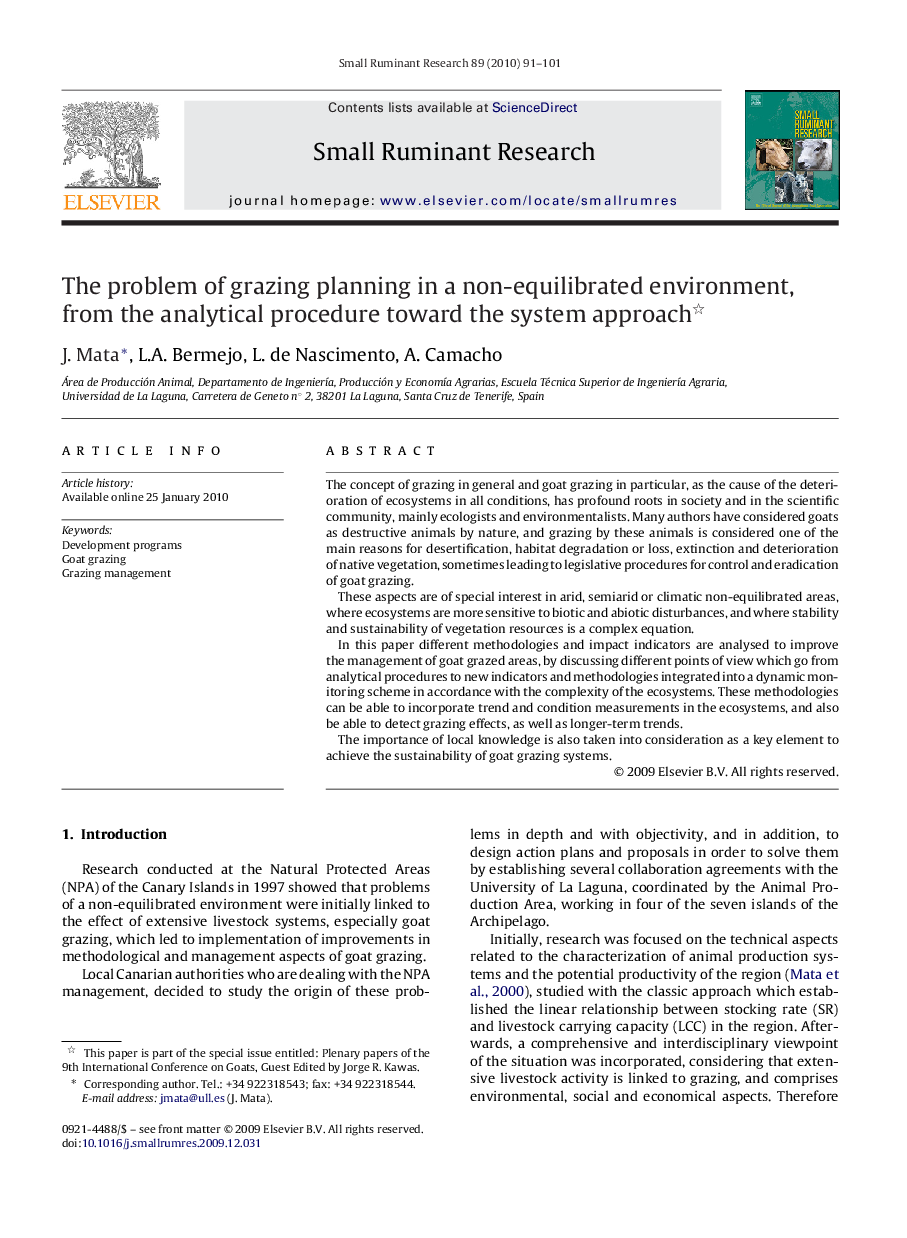| Article ID | Journal | Published Year | Pages | File Type |
|---|---|---|---|---|
| 2457605 | Small Ruminant Research | 2010 | 11 Pages |
The concept of grazing in general and goat grazing in particular, as the cause of the deterioration of ecosystems in all conditions, has profound roots in society and in the scientific community, mainly ecologists and environmentalists. Many authors have considered goats as destructive animals by nature, and grazing by these animals is considered one of the main reasons for desertification, habitat degradation or loss, extinction and deterioration of native vegetation, sometimes leading to legislative procedures for control and eradication of goat grazing.These aspects are of special interest in arid, semiarid or climatic non-equilibrated areas, where ecosystems are more sensitive to biotic and abiotic disturbances, and where stability and sustainability of vegetation resources is a complex equation.In this paper different methodologies and impact indicators are analysed to improve the management of goat grazed areas, by discussing different points of view which go from analytical procedures to new indicators and methodologies integrated into a dynamic monitoring scheme in accordance with the complexity of the ecosystems. These methodologies can be able to incorporate trend and condition measurements in the ecosystems, and also be able to detect grazing effects, as well as longer-term trends.The importance of local knowledge is also taken into consideration as a key element to achieve the sustainability of goat grazing systems.
